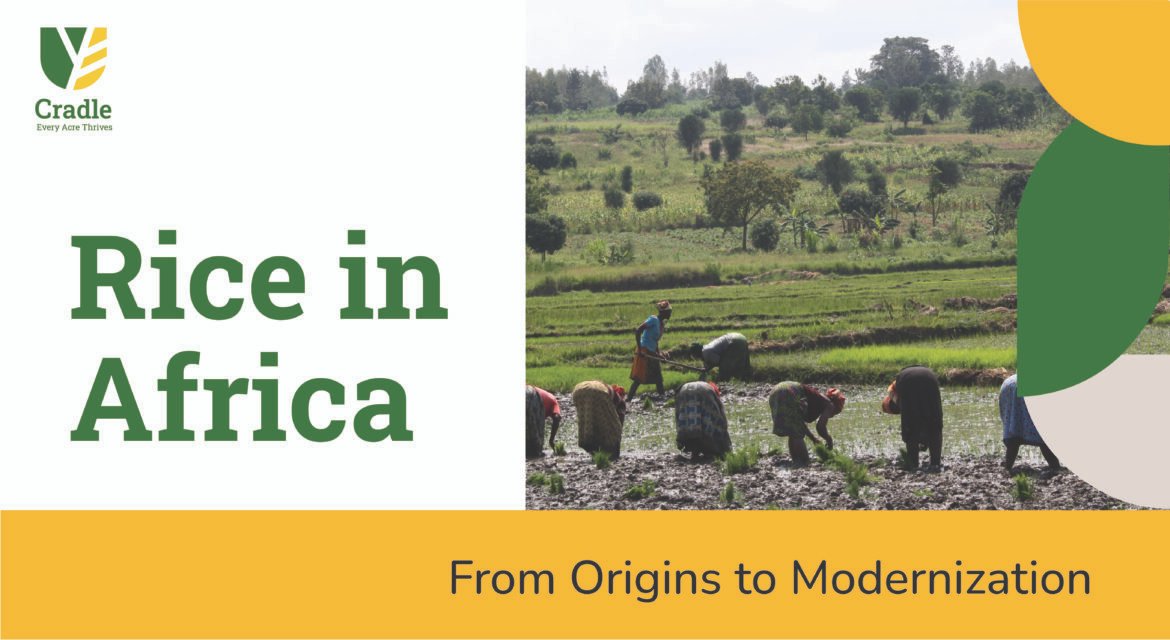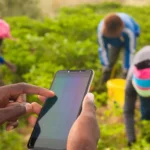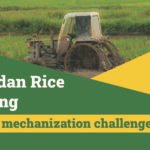Rice is one of the most important and widely consumed staple foods in the world—and its journey in Africa is a story of transformation, adaptation, and innovation.
While many people associate rice with Asia, Africa has its own rich and dynamic history with the crop, dating back centuries. From indigenous varieties to colonial influence and modern-day hybrids, rice has evolved alongside African societies, shaping diets, economies, and farming systems.
🌿 African Rice: The Original Grain
Long before rice from Asia made its way to African shores, local communities were already cultivating a native species: Oryza glaberrima, commonly referred to as African rice.
This crop, grown primarily in West Africa, was deeply rooted in local cultures. It thrived in challenging environments, from floodplains to upland areas, and communities developed unique techniques for managing water, soil, and pests. Knowledge spread along Sahelian trade routes and rivers like the Niger, influencing practices in countries like Nigeria, Ghana, Côte d’Ivoire, and Liberia.
🚢 The Arrival of Asian Rice
In the 15th century, Portuguese traders introduced Oryza sativa, or Asian rice, to the continent. It yielded more grain per harvest than the native variety, making it an attractive alternative for farmers.
However, Asian rice came with new demands: it needed different farming techniques and more water. Its adoption was gradual, blending with local traditions over time.
🏛️ Colonial Influence: Growth and Control
As European colonial powers expanded their presence across Africa, they pushed for increased rice production—especially in West and East Africa.
Colonial governments invested in large-scale irrigation and flood control systems. Madagascar, under French colonial rule, became a major rice producer thanks to these infrastructure projects.
However, these efforts often prioritized exports and cash crops over local food security. Many traditional farming systems were disrupted, and smallholder farmers had little say in how their land was used.
🇦🇫 Independence and Ambitious Reforms
After independence in the mid-20th century, African countries sought to reverse their dependency on imported rice. Governments in nations like Nigeria, Senegal, and Mali launched national rice strategies, built irrigation schemes, and supported mechanized farming.
Still, progress was mixed. Efforts were often hampered by:
Limited funding
Land tenure challenges
Over-reliance on imported seed
Weak farmer support systems
🔬 Innovation: The Rise of NERICA
In response to Africa’s growing rice demand, scientists developed NERICA (New Rice for Africa), a hybrid that combined the hardiness of African rice with the yield potential of Asian rice.
NERICA promised better productivity, drought resistance, and pest tolerance. While its potential was significant, rollout faced practical hurdles—especially limited training and access to seeds for smallholder farmers.
🌍 Today’s Rice Landscape: Progress and Obstacles
In recent years, countries like Tanzania, Senegal, and Mali have set bold targets for rice self-sufficiency. Improved farming techniques, irrigation expansion, and public-private partnerships have helped boost production.
But the road ahead is still challenging:
🌧️ Climate change affects rainfall and growing seasons.
💸 Financing gaps limit smallholder investment in equipment and inputs.
📉 Market volatility impacts profitability and farmer resilience.
🇷🇼 Spotlight: Rwanda’s Rice Journey
Rice wasn’t traditionally grown in Rwanda—it was introduced during colonial times. After independence, the Rwandan government recognized rice as a strategic crop and invested in its development.
Through partnerships with research institutions and international organizations, Rwanda has expanded irrigation and adopted improved varieties. Today, rice is an increasingly important part of the country’s food system and rural economy.
🌾 The Road Ahead: Sustainable, Smart, and Inclusive
The story of rice in Africa is far from over. It’s a journey that reflects Africa’s broader agricultural transformation—rooted in tradition, shaped by external influence, and moving toward a more resilient and self-reliant future.
For rice to continue playing a role in food security and economic growth, future efforts must focus on:
Sustainable farming practices
Climate adaptation
Farmer training and empowerment
Smarter technology integration
Africa’s rice revolution isn’t just about increasing yields—it’s about ensuring that every acre thrives.
📝 Inspired by decades of history, innovation, and local wisdom. Source: Cradle, “Every Acre Thrives.”




